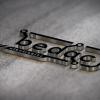Hi all,
i have an issue with input ports on Netduino - (tested with FW 4.1 and 4.2)
Whatever port i will use (0-13) is always TRUE but i have no wired it.
Program is simple...:
public class Program
{
private static InputPort input = new InputPort(Pins.GPIO_PIN_D1, false, Port.ResistorMode.PullUp);
private static OutputPort led = new OutputPort(Pins.ONBOARD_LED, false);
private static bool inputState = false;
public static void Main()
{
while (true)
{
inputState = input.Read();
led.Write(inputState );
Debug.Print("Input state = " + inputState.ToString());
Debug.Print("------------------------");
Thread.Sleep(500);
}
}
}
Does anybody now why is this code not working. Becase i have tested it on Netduione 2 and there is it working.
Notice : Ii i have used the same ports in output mode...this is working perfectly.
Thanks for all help















